by GardenLover | Jun 22, 2017 | Gardens to Drive
Where Beauty and Wisdom Grow
By Michael Leach
In a world where social media and the daily news serve up an ever-increasing diet of violence, vulgarity and vitriolic verbiage, gardens and gardening are needed more than ever. Whether it be a few potted plants on a window sill or carefully tended acres, gardens make an instant and effective antidote to media overload.
Such thoughts were inspired by a recent visit to the Columbus Park of Roses for the dedication of a new entryway to the 13-acre site, one of America’s largest public rose gardens. The new entry is a fitting welcome to the 12,000 rose plants that grow in spite of often-harsh Ohio conditions. That perseverance is something to marvel at. More than 400 rose varieties, from some of the oldest heritage types to the newest hybrids, are featured. The park also has perennials and herbs.(For additional information on the garden, visit http://www.parkofroses.org.)
The Columbus Recreation and Parks Department and volunteers keep the flowers blooming. That’s another bit of inspiration from the garden — cooperation.
Elegant in its simplicity, the new entry features several stone columns, each adorned with a metal plaque containing wisdom for the ages. The pillars were donated by community groups, businesses and private citizens.
Few sound bites or FaceBook posts are ever as revealing or comforting as the thoughts of the poets, gardeners and others displayed. Here’s a sampling of the words and flowers that grow in our part of the Heartland.
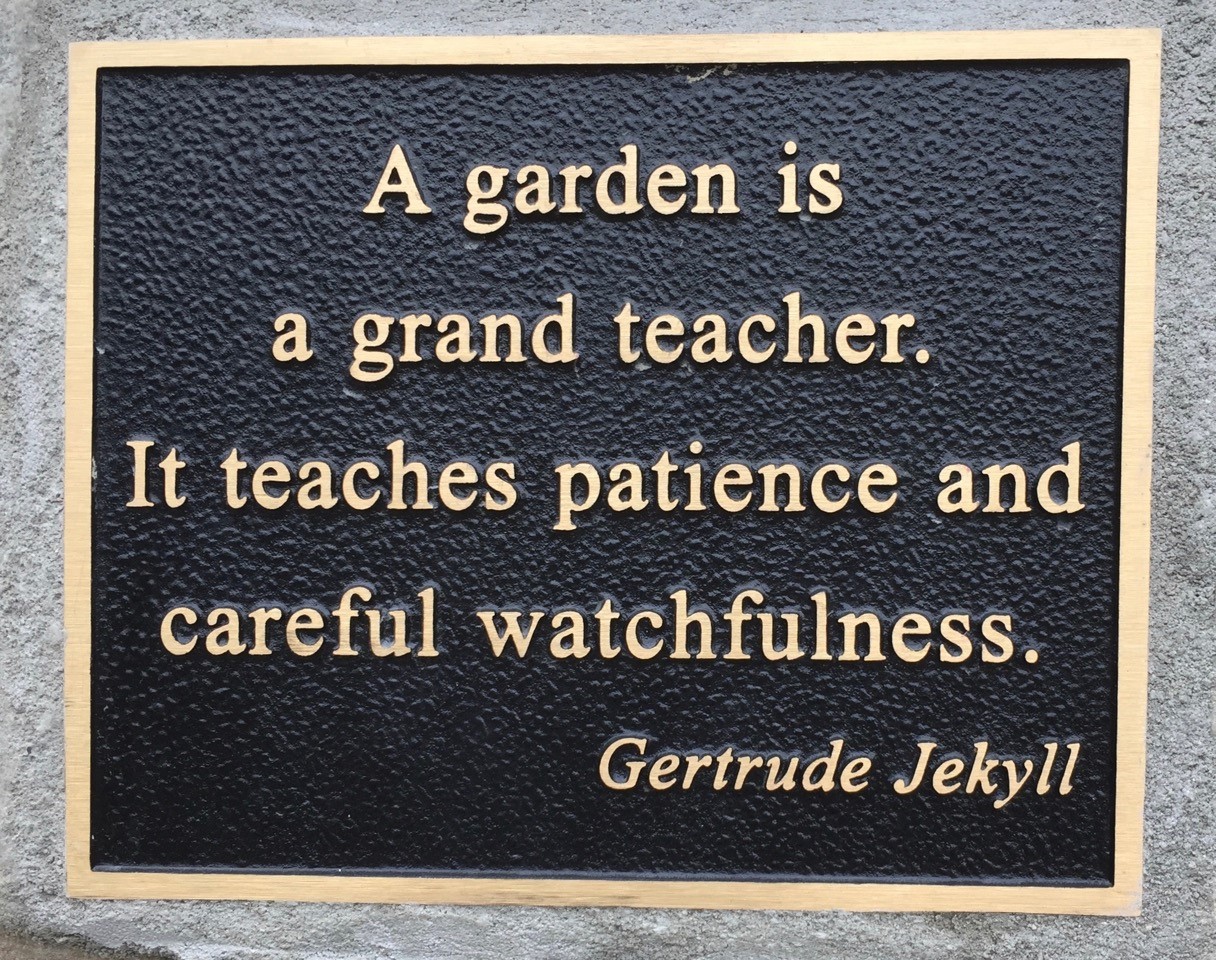

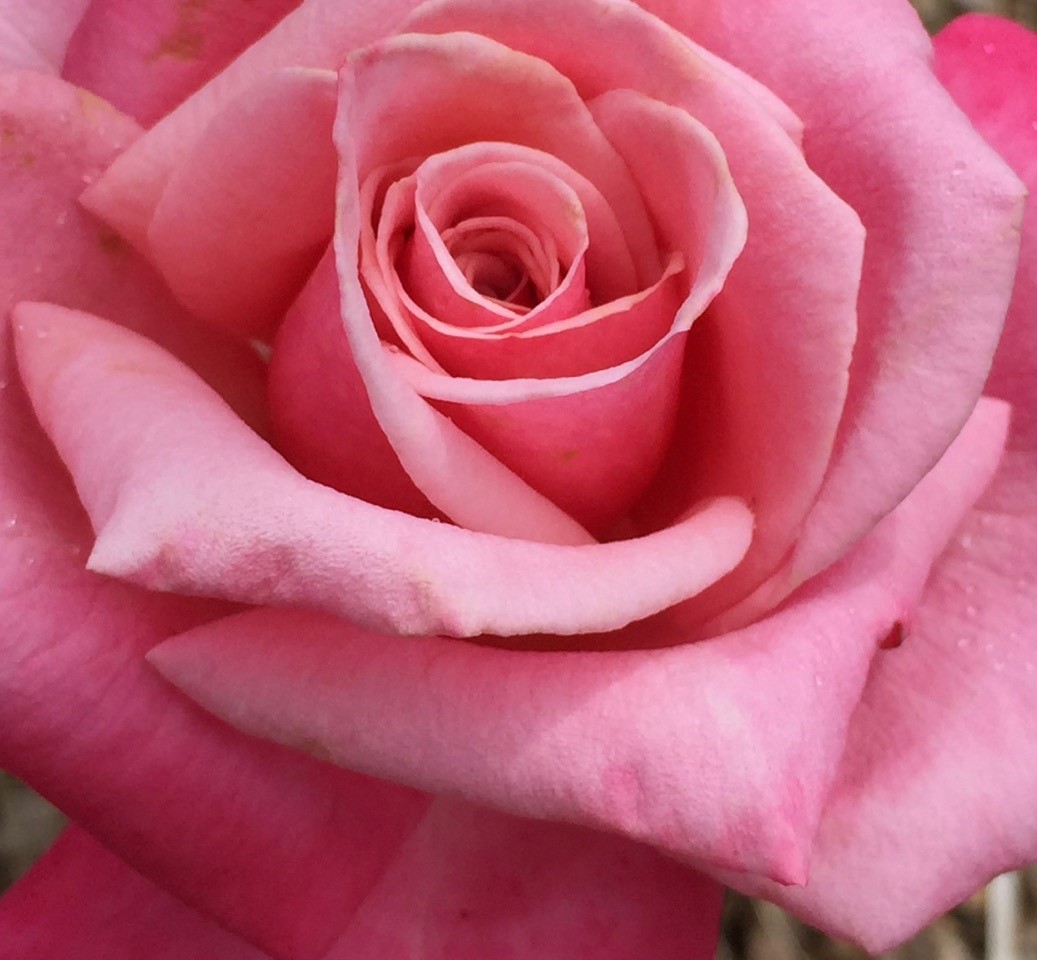

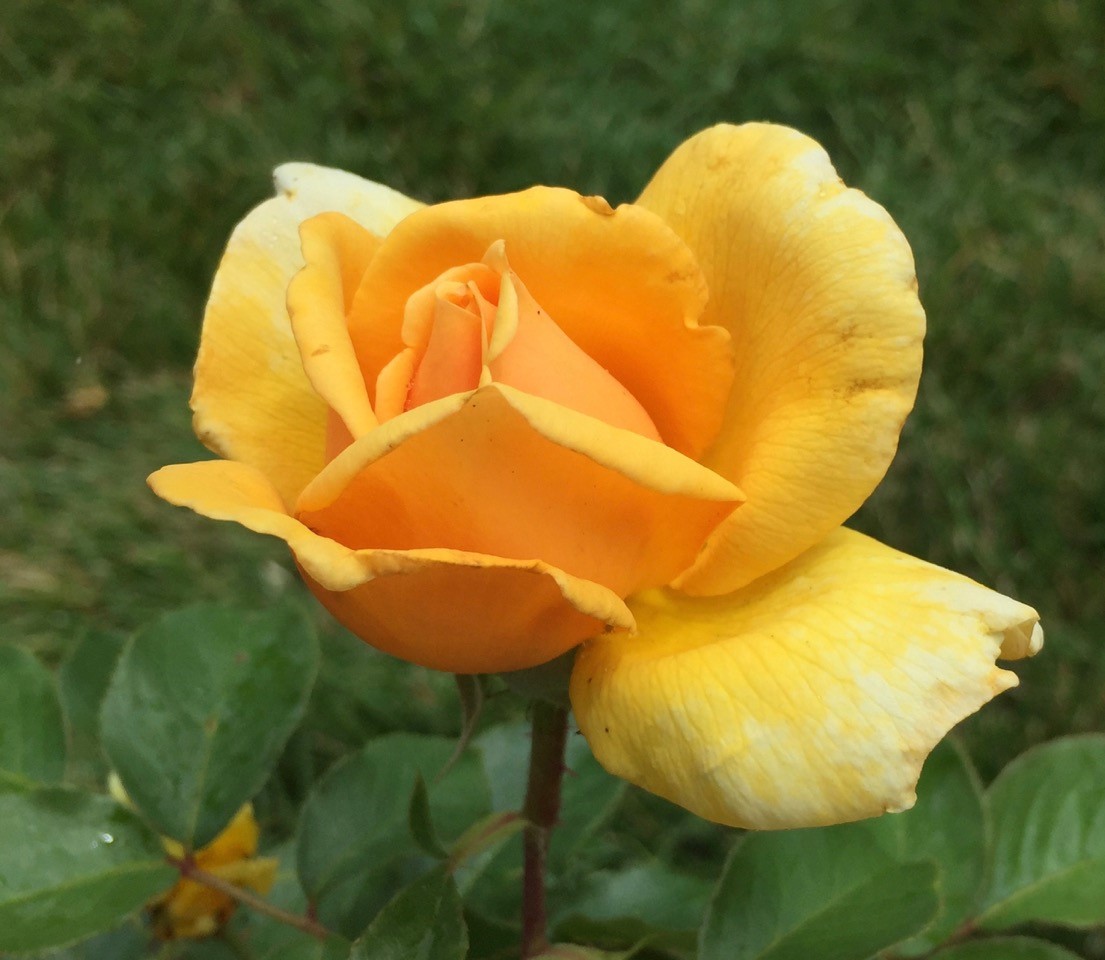

by GardenLover | May 24, 2017 | Special Topic
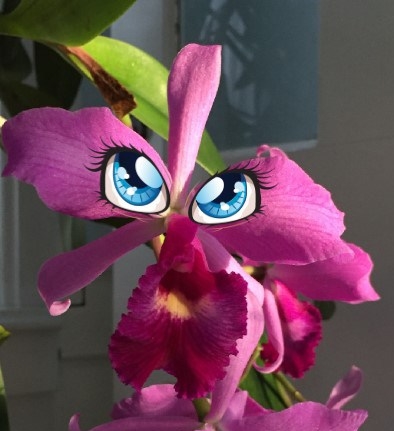
Orchid Reveals Ruthless Gardener’s Approach
By Michael Leach
This house is the Bates Motel for potted plants. I’ll grant you that my human keeper waters me more or less regularly, gives a dash of granular organic fertilizer at appropriate intervals, lets me spend months outside, and trims off faded flowers and the occasional yellowing leaf. So why the sense that Alfred Hitchcock directs daily life?
He murders plants. Many human beings consider houseplants as surrogate children. I’ve gathered this from overheard phone conversations and his endless chatter with visitors. I also know about this from the potted plants and rooted cuttings he occasionally receives from other people. We plants share stories, don’t think we don’t. He should consider us in the same way dog and cat owners are notorious for going all stupid over some slobbering Labrador or snooty Siamese.
He wasn’t always this way. When I first came on the scene, he was more like other growers. But over our 20-plus years together, that heartwarming attachment faded, replaced by his dreadful notion that plants in this household exist only to satisfy his aesthetic sensibilities. Fail to keep producing fresh, lush foliage and flowers and you’re out. “Grow or go,” he says almost every month. It all started with that dreadful poinsettia.
He’s so cheap that one year he decided to keep the poinsettia and get it to bloom for the next Christmas. Those things are ridiculous, in my opinion, but I am an orchid after all, and Cattleya or corsage-type orchid at that. Pfff to poinsettias I say. They’re gaudy for weeks throughout the winter and then commence a prolonged death scene worthy of a melodrama. After he put that has-been holiday star outside for summer, it turned into a shrub with lush foliage worthy of the tropics.
Then he began the tedious process of trying to fool it into blooming. The poinsettia wasn’t fooled. Instead of massive swaths of red, only puny, vaguely red bracts emerged and this barely days before Dec. 25. He was livid and tossed the plant onto the compost pile in December! We were agast. After that Christmas, when asked what should be done with poinsettias he blithely said, “Throw it on the compost pile!”
It was the following autumn I noticed things began to change. As usual, the tiny sunporch was crammed with houseplants returning to winter quarters and some impatiens and geraniums salvaged from the garden. There was the giant fern in the early days, just kept getting bigger because he lusted for the status of a big plant.
Those annuals always caused trouble. Being unaccustomed to the dim light of cloudy Ohio autumn and early winter, they suffered horribly, even in the south-facing sunporch windows. As you know, plants drop flowers, then buds and finally leaves — lots of leaves — when stressed by lack of sun. It’s a near death experience. This clashed with his sense of tidiness that borders on obsession.
Grumblings were heard daily, as one after another of the impatiens went to that big mixed border in the sky, leaving a mess behind. In early December, the massive fern began its slow death spiral that never ceased until it went back outside again in early May. By then only sickly green fronds remained. Somehow the old girl always managed to produce three or four flimsy new fronds in the growing light of early spring. That was the only thing that saved her until the day he snapped.
It was late autumn and the big fern continued to sit in a shaded place under the crab apple tree, despite temperatures plunging faster than stock prices in a crash. Still he seemed oblivious to the fern. Then it happened, the first freeze of the season.
The fern was a mushy, dark green mess the next day. He looked out and said, “Oh. I forgot to bring in the fern.” I swear there was a fiendish grin and a note of glee in his voice. The rest of us trembled in our places on the windowsills, table tops and warm corners of the porch. What kind of monster is this we wondered? We couldn’t help but lose a few leaves and petals.
One after another, the straggly and overgrown were “forgotten” in the first freeze. “A nice addition to the compost pile,” he said, tossing their frozen-stiff corpses into that wretched tumble of banana peels, coffee grounds and pulled-up weeds he calls a compost pile.
Me? I plan to grow, not go. Despite my too small container, stale potting mix and inadequate winter light, I continue to produce a bounty of lavender flowers, starting about Thanksgiving Day and continuing into mid-January. The oohs and aahs prompted by my delicate, lightly scented blooms keep me in good graces. “I’ve never seen an orchid this big,” visitors gasp in amazement.
While he glows and swells with pride. I sigh. Guaranteed another year for me it seems.
This short story by Michael Leach was done as a monthly assignment for the Grove City Writers’ Group.
by GardenLover | Mar 6, 2017 | Trendspotting
By Teresa Woodard
If there was a fashion week for the garden world, it would be this first full week of March as lifestyle magazines roll out the season’s latest plants and garden trends. Some of the themes that dominated 2016 – edible landscapes and bee-friendly gardens – are still growing and climbing to new levels. Here are ten trends curated from the latest issues of Better Homes & Gardens, Martha Stewart Living, Southern Living, Country Gardens, Garden Design and the UK’s Gardens Illustrated.
- Shades of Greenery – Named the 2017 Color of the Year by the Pantone Institute, greenery couldn’t be more fitting for the gardening world. While there are varying shades of green foliage, there are also plenty of green flowers to update your outdoor spaces. Try Bells of Ireland, ‘Green Envy’ Zinnia, ‘Sophistica Lime Green’ petunias, hellebores, orchids, ‘Green Flutter’ daylilies , ‘Green Star’ gladiolas, ‘Spring Green’ tulips and ‘Pistachio’ daffodils. Also, try spray-painting a bench green or adding green throw pillow for a fresh look.
- Shrubs Go Small – For low maintenance and small spaces, dwarf shrubs are the answer. At two-feet in size, try planting these shrubs in multiples or in a space where you don’t want to have to keep pruning to maintain a small size. Among the hydrangeas, look for ‘Tiny Tuff Stuff,’ ‘Bobo’ and ‘Little Quick Fire.” Also try ‘Green Velvet’ boxwood.
- Updated Classics — Hardwood trees are in short supply in areas of the country where ash trees have fallen to the ash borer. Top replacements include Accolade elm, State Street miyabei maple, Exclamation London planetree, Autumn Gold ginkgo, Fall Fiesta sugar maple and Shawnee Brave bald cypress.
- Pollinator Party — Gardeners are inviting pollinators to their backyards with flowers like monarda, butterfly weed, lantana, aster, liatris, lavender and borage. They’re also luring bees with trees like lindens, crabapples, redbuds, locusts and serviceberries.
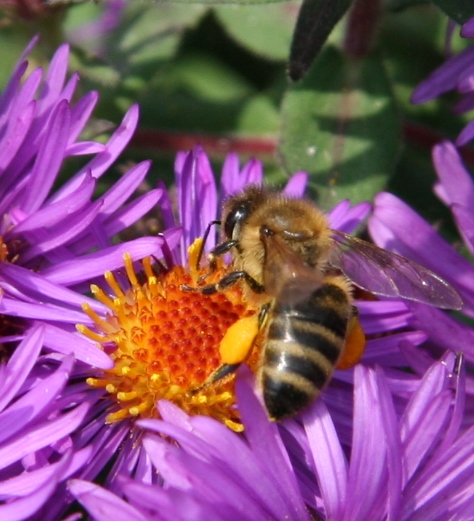
Bee on aster
- Urban Wild – Driven by high profile urban landscapes like Chicago’s Lurie Gardens and NYC’s High Line, the wild design is gaining ground in residential outdoor spaces. Inspired designers are bringing high design to naturalized spaces. For inspiration, check out recently released books such as Wild By Design, Garden Revolution and Planting in a Post-wild World.
- Succulents Mania – Succulents were BIG at the winter plant trade shows, both in terms of variety (some look like rosettes while other look like sea creatures) and in terms of popularity (vendors showed them in containers, wall displays, framed and even suspended in macramé hangers).
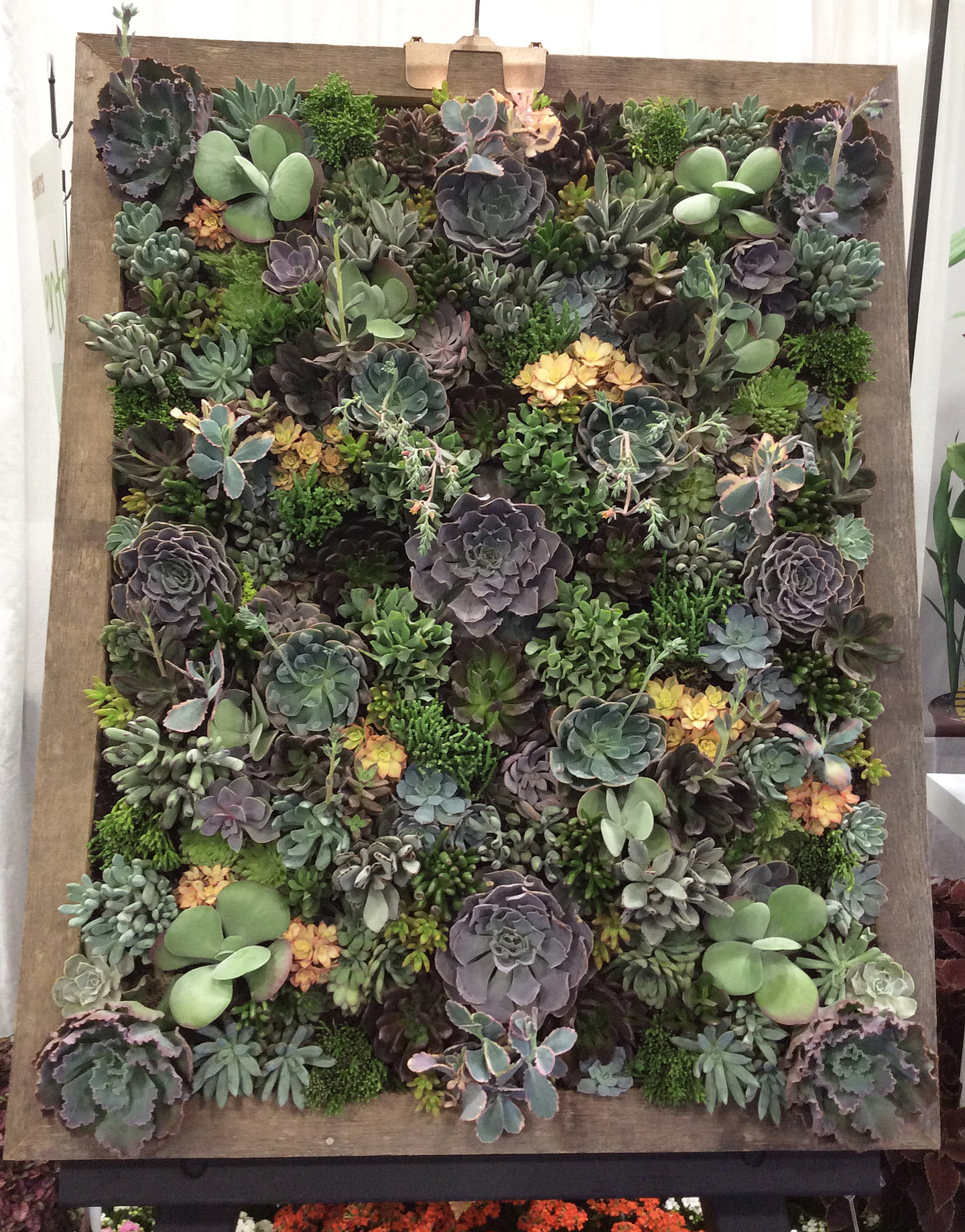
- Elevated Edibles – Edibles aren’t just relegated to raised beds hidden along the ugly side of the house anymore. They’re now tucked in perennial borders, grown in pots and climbing sculptural supports. Check out recent magazines for new varieties (American Gardener), petite sizes (Country Gardens), hops (Horticulture), design ideas (Better Homes & Gardens), edible flowers (Southern Living) and a beginner’s guide (Martha Stewart Living).
- Fit for Extreme Weather – From heat waves to flooding, weather extremes are becoming the norm, and recent magazines are offering plenty of inspiration. See Country Gardens for a boggy backyard garden and Better Homes & Gardens for an arid one.
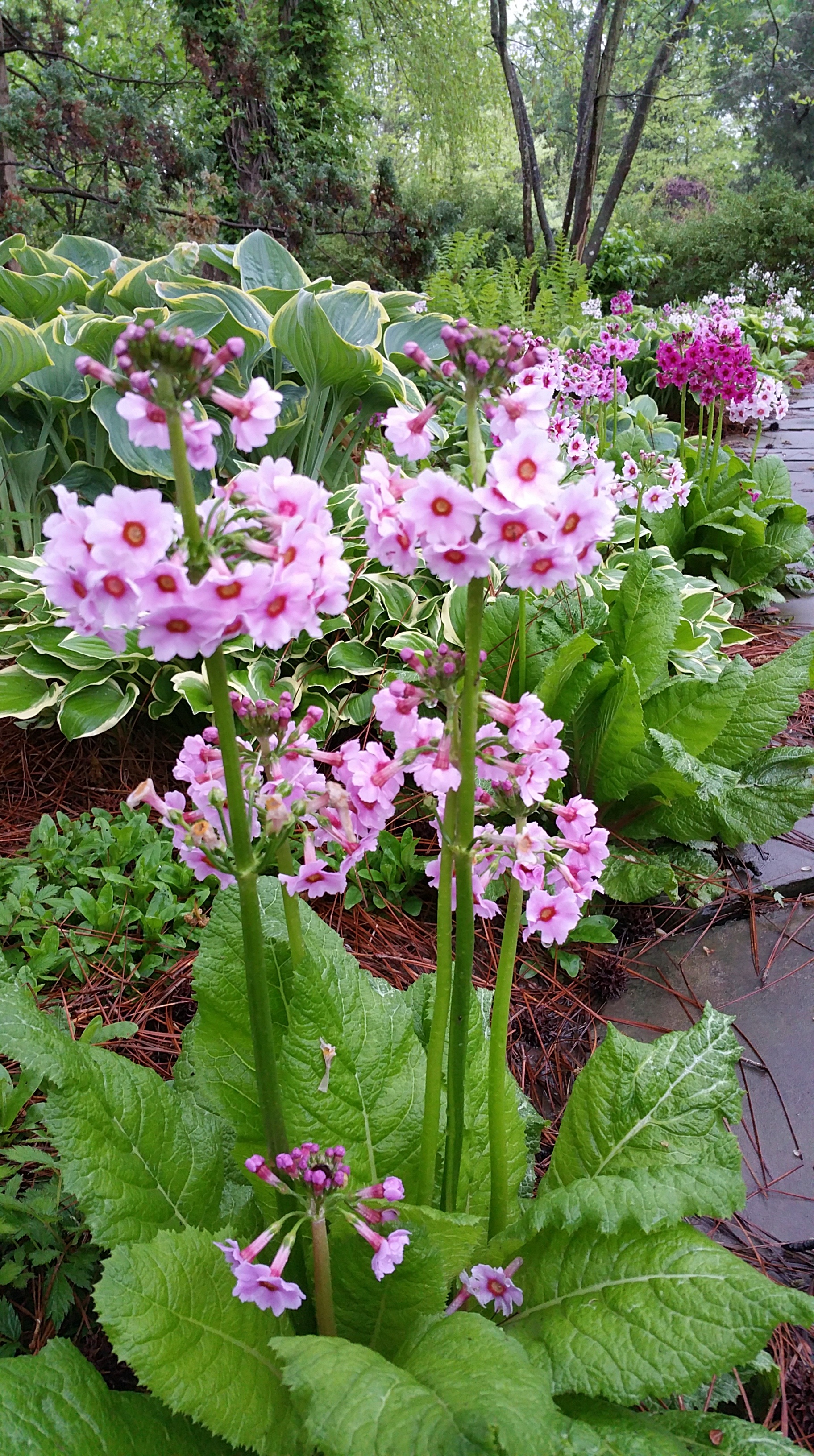
Primroses in a bog garden featured in Country Gardens (spring 2017)
- Uber Local Flowers – The locavore movement is stretching beyond foods to flowers as local flowers farms offer fresh blooms as an alternative to those shipped from faraway countries. Backyard gardeners can take this one step further with their own cutting garden. See the March issue of Better Homes & Gardens for tips from Floret Farm.
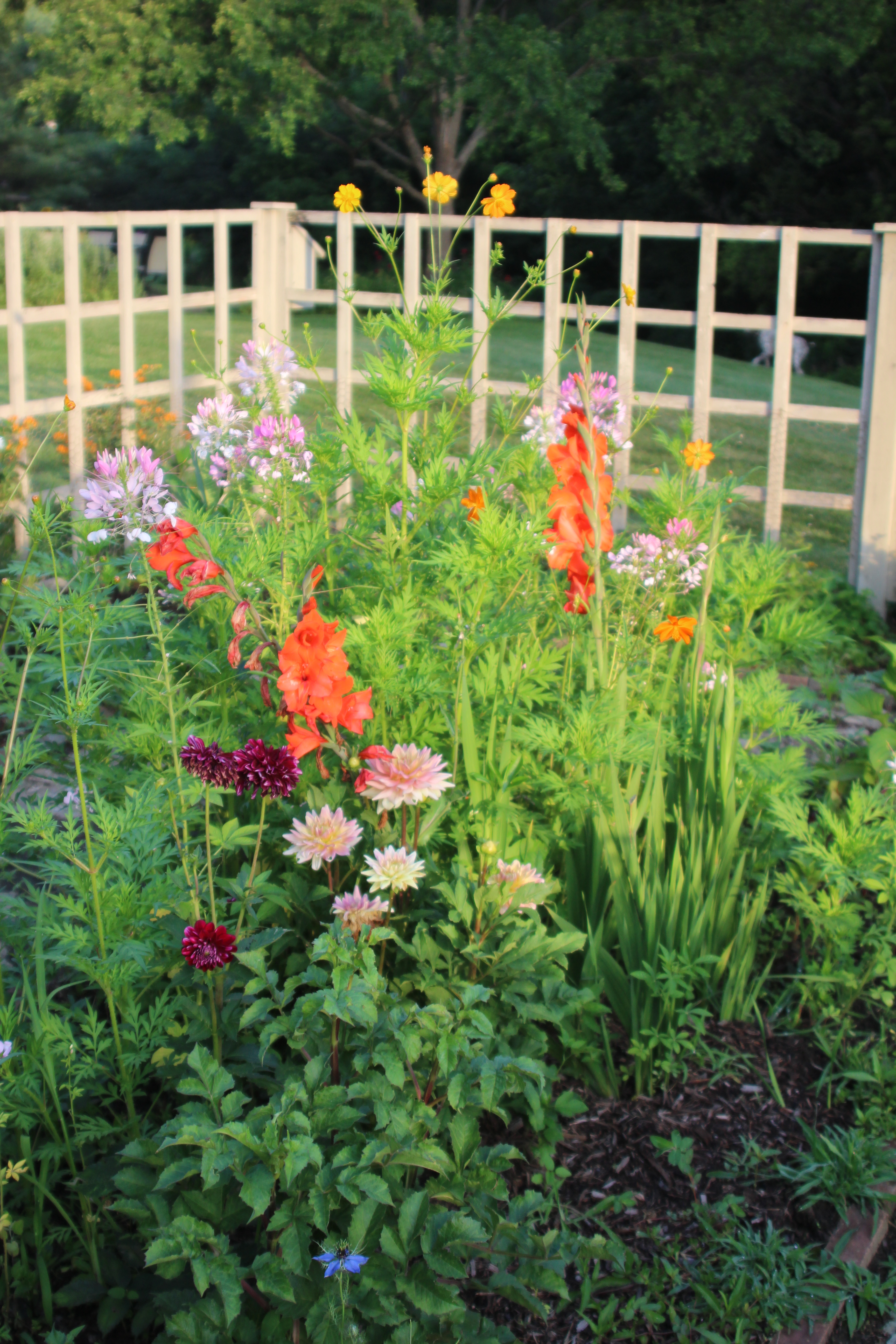
- Millennial Appeal – Cashing in on the so-called Experience Economy, many savvy garden stores, yoga studios, floral farms and even clothing stores like Anthropologie are offering a host of workshops from flower arrangements to succulent containers to origami blooms. Check out the latest issue of Magnolia Journal for a floral workshop hosted by Joanna Gaines.
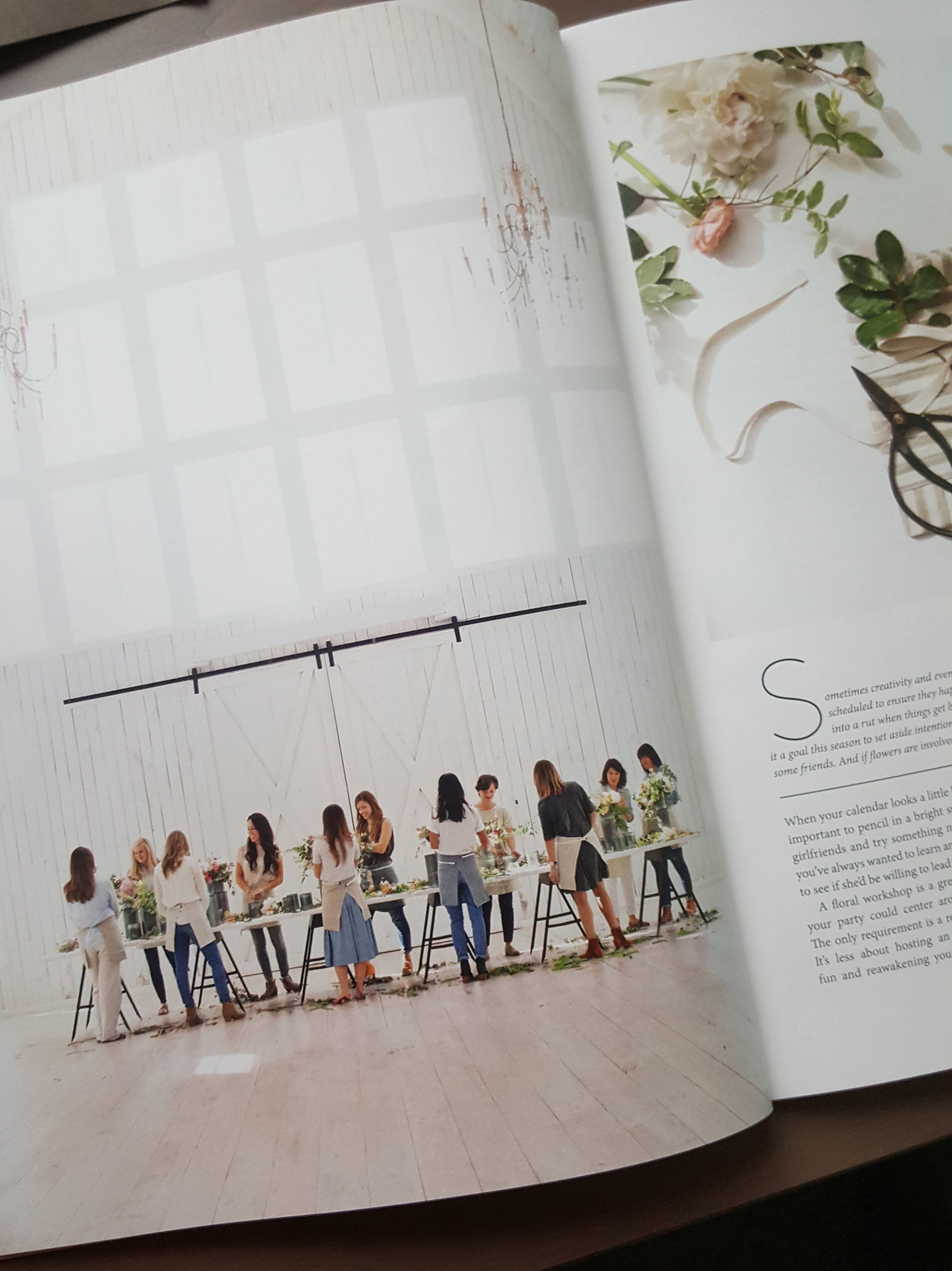
“Flora Workshop” in The Magnolia Journal Spring 2017
by GardenLover | Feb 24, 2017 | Special Topic
Garden Questions Coming Your Way
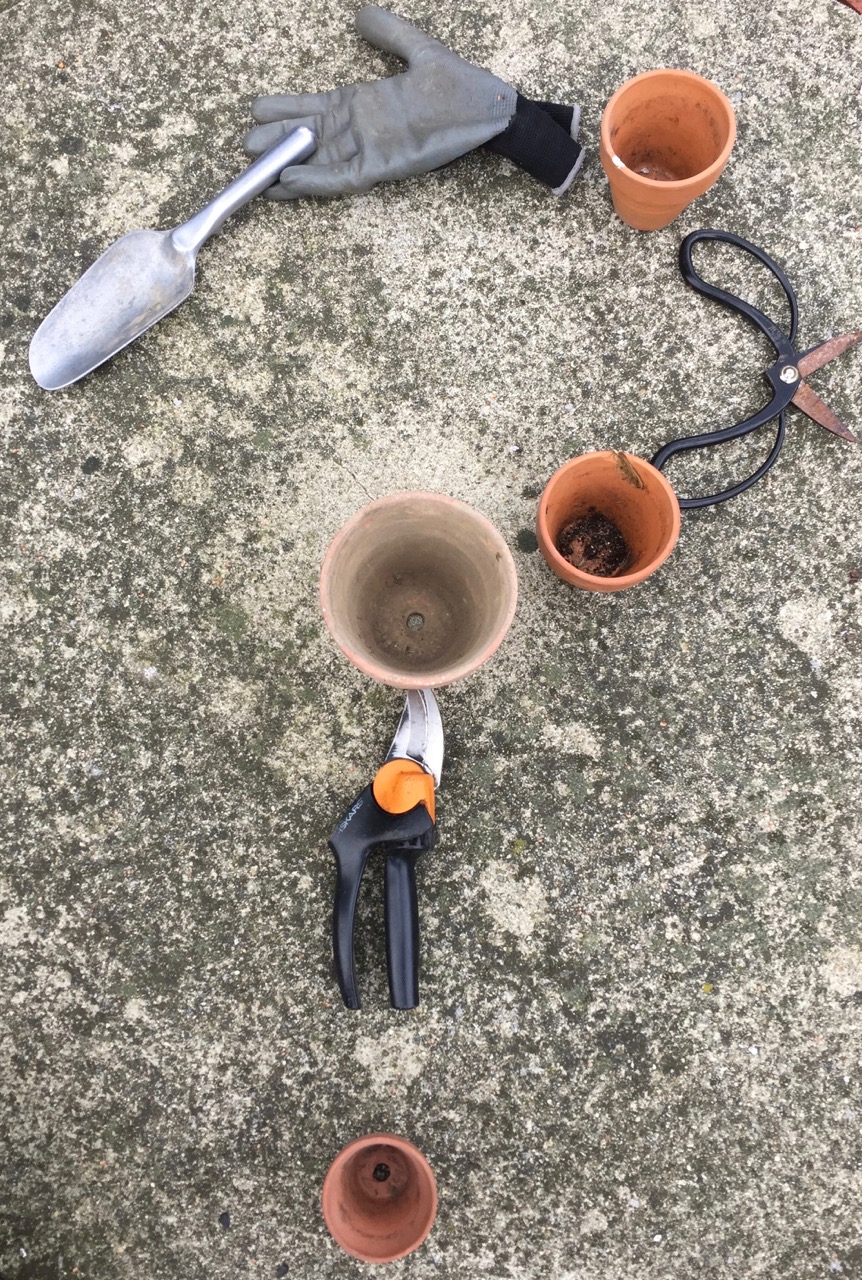
By Michael Leach
A word of warning: The question season is returning. As soon as cardinals start singing songs of welcome to sunrises that come ever earlier, and determined green shoots begin pushing through the moldering autumn leaves, gardeners will be peppered with questions wherever they go.
Not that we don’t get questions all year round. Who hasn’t been at a party or committee meeting or funeral and somehow been identified as a gardener? Next thing you know, questions are flying your way. Doctors and lawyers probably field more questions than we growers, but even my doctor occasionally asks for help (at no reduction in his fee).
There’s no telling when a question will arise. I once stopped by a hospital to visit a friend. Obviously his condition had deteriorated considerably since my last visit about three days before — the waiting area was full of family who’d been summoned due to a sudden turn. The grim silence was broken only now and then by some soft voices.
Despite feeling awkward, I sat quietly, prayed and waited. Suddenly, my friend’s son-in-law, who was sitting several seats away, asked me loudly, “Do you know anything about asparagus?” Laugher erupted. Apparently my “job” was to be part of the comic relief. The man was serious, though, so we talked asparagus awhile.
Because I’m known as a garden geek among the guys who hit the Y before heading off to work, I get plenty of questions. Often I’m wrapped only in a towel and sometimes nothing. (I refer to myself as the naked gardener.) But the info on lawn care, tree planting and tomato blights is as eagerly received as if I were lecturing in cap and gown at a college podium.
A nurse friend tells me medical people try to get patients to talk about hobbies and interests during treatment. Yet, given my experience with the general public, I’m not so sure. I thought one nurse was unusually intent on knowing how to care for her roses for the coming winter. I answered her questions while undergoing surgery for a skin cancer on my nose that involved a small skin graft.
But it wasn’t until I was an emergency room patient that I experienced questioning under the most unusual circumstances (so far). I was being examined following a rear-end collision. The impact was so brutal that my head flipped back and broke the glass in the rear window of my pickup truck. The impact also severed the cable holding the spare tire beneath the now crushed bed. Amazingly, I had no obvious signs of injury, but a check up at the hospital seemed like a good idea. (God was with me, for I never even had a headache afterward.)
Strapped to a body board, the ambulance took me to the ER. While there, word got out that I was the garden reporter for The Columbus Dispatch. Apparently an X-ray tech recognized my name. He had a relative who was a graphic artist I worked with.
Tests, X-rays and then seemingly endless waiting for results. Still strapped to the board, I could only look at the overhead fluorescent lights. There had been only a couple of questions from the staff. I recalled what my nurse friend said about trying to make me comfortable. But the ER doctor quickly dispelled such thoughts. He skipped small talk and asked, “Can you recommend a good landscape designer?”
Who questions you — and where?
OK, so here’s a garden question for you, perhaps your first of the 2017 season. Where do you field garden questions and from whom? Is it the hair salon, soccer field, coffee shop, drug store? You’ve probably been queried in places few of us can image, so please share.
Now a second question: When stumped with a question, where do you turn for help? Please share favorite websites, books and other references.
For instance, among my go-to gurus is the Missouri Botanical Garden Plant Finder http://www.missouribotanicalgarden.org/plantfinder/plantfindersearch.aspx
by GardenLover | Jan 23, 2017 | Favorite Flora, Garden profile
Our Fascination with Nature’s Green Carpet
By Debra Knapke
Many of our plant preferences are shaped by early experiences in the landscape or in the gardens of our parents or grandparents. Moss holds a place in my memories of the small woods by my childhood home. Bright green cushions appeared after rains and then disappeared during dry summers.
I seriously doubt that I thought about where moss belonged, but I knew that it was a part of the moist woods of my youth and that I liked it.
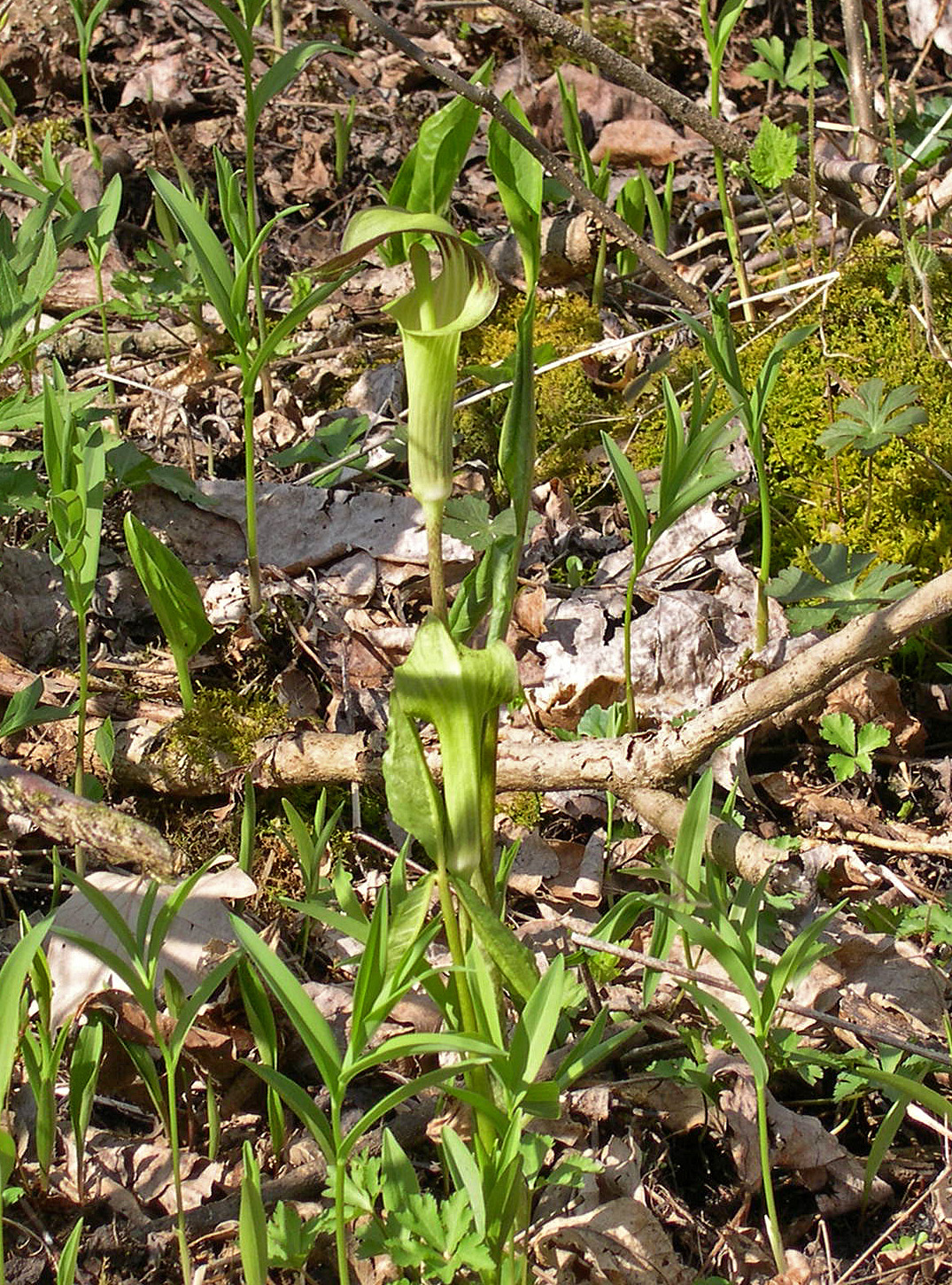
Nature’s design: moss covering the ground under Jack-in-the-pulpit and other woodland native plants, Cedar Bog in Urbana, OH, April 17, 2004
A moss garden works best when it follows nature’s example. In the above picture, this community of plants is situated in a part-shade, moist location. Some mosses will grow in full sun but only in wet sites.
The picture below is a sphagnum peat bog that was designed for the Heritage Garden at the Ohio Governor’s Residence. It represents the kettle lake bogs that were created approximately 11,000 years ago by retreating glaciers. The sandy, acidic soil – which is kept wet – supports the plant community of cranberry, sphagnum moss, pitcher plant and grass pinks (native orchid).

Sphagnum bog in the Heritage Garden at the Ohio Governor’s Residence, Columbus, OH.
This garden was the inspiration for my own small bog which is in a 30” wide by 12” tall, double-walled plastic bowl. The cranberries have become the dominant plant in my bog, but the live sphagnum moss and pitcher plants are visible in winter when the cranberry leaves turn their deep mahogany color. The “soil” is a combination of rehydrated dried sphagnum and silica sand which has a neutral pH. If you wish to build your own bog, avoid using gray builder’s sand which is fractured from limestone and has a high pH. Golden to orange sand is made from acidic sandstone and would be appropriate for a constructed bog. Last note – live sphagnum moss is difficult to find as suppliers need to have permits to harvest it.
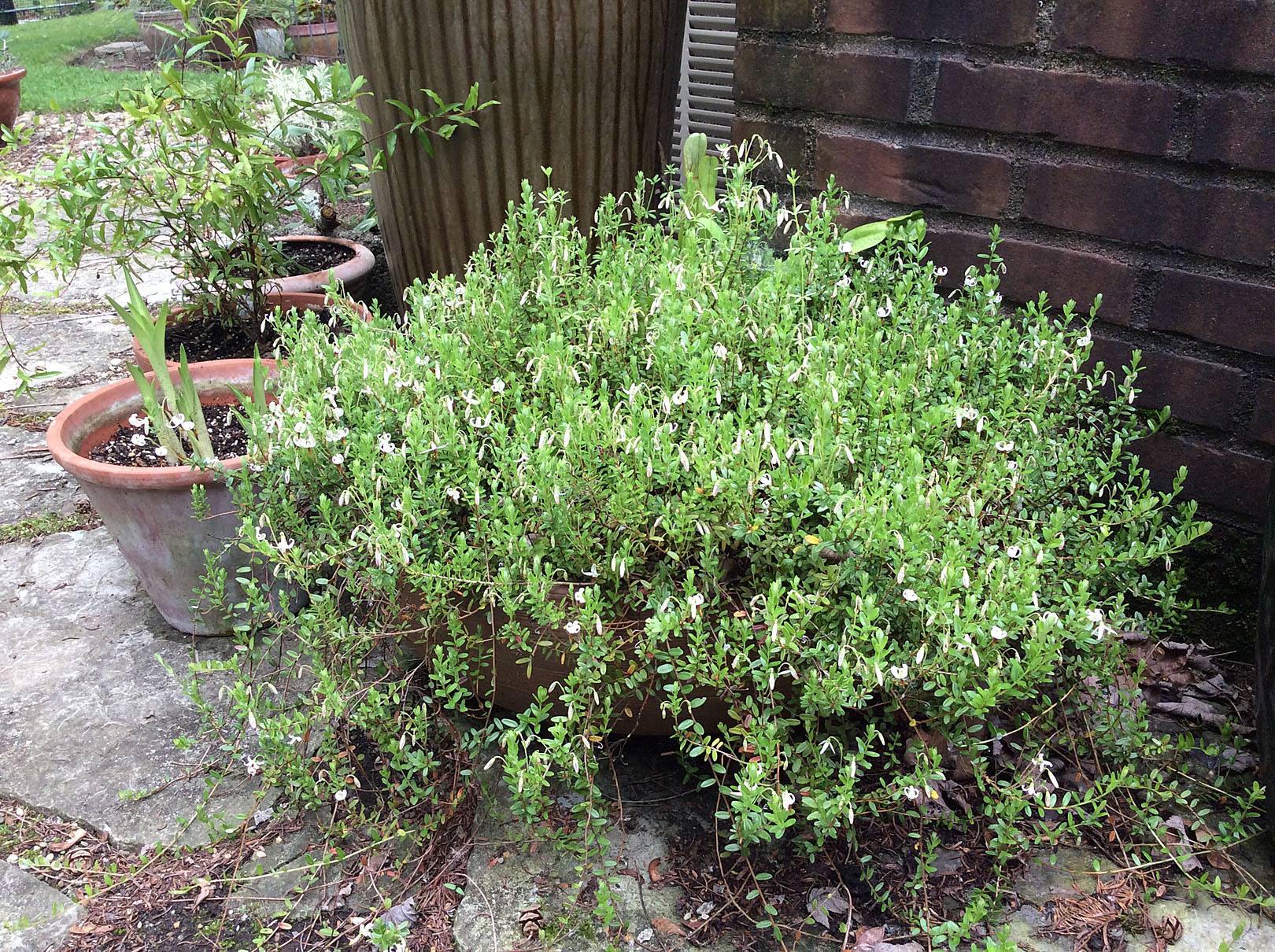
The cranberries are usually consumed by my resident squirrels. The few I have harvested are delicious.
From the realistic to the sublime… during a trip to Japan my appreciation of moss became a passion. The beauty of the Japanese garden style is a testament to attention to detail; the placement of plants, rocks and all elements are thought out and expressed in a harmonious creation. My words fall short of the physical, emotional and intellectual effect of what I experienced while viewing these built places. My pictorial vignettes may help.
Below is a moss garden which is kept pristine by many workers. This type of garden is not for the beginning designer or gardener and can only be successful in moist climates. Watering large expanses of moss from a hose is not a noble activity.
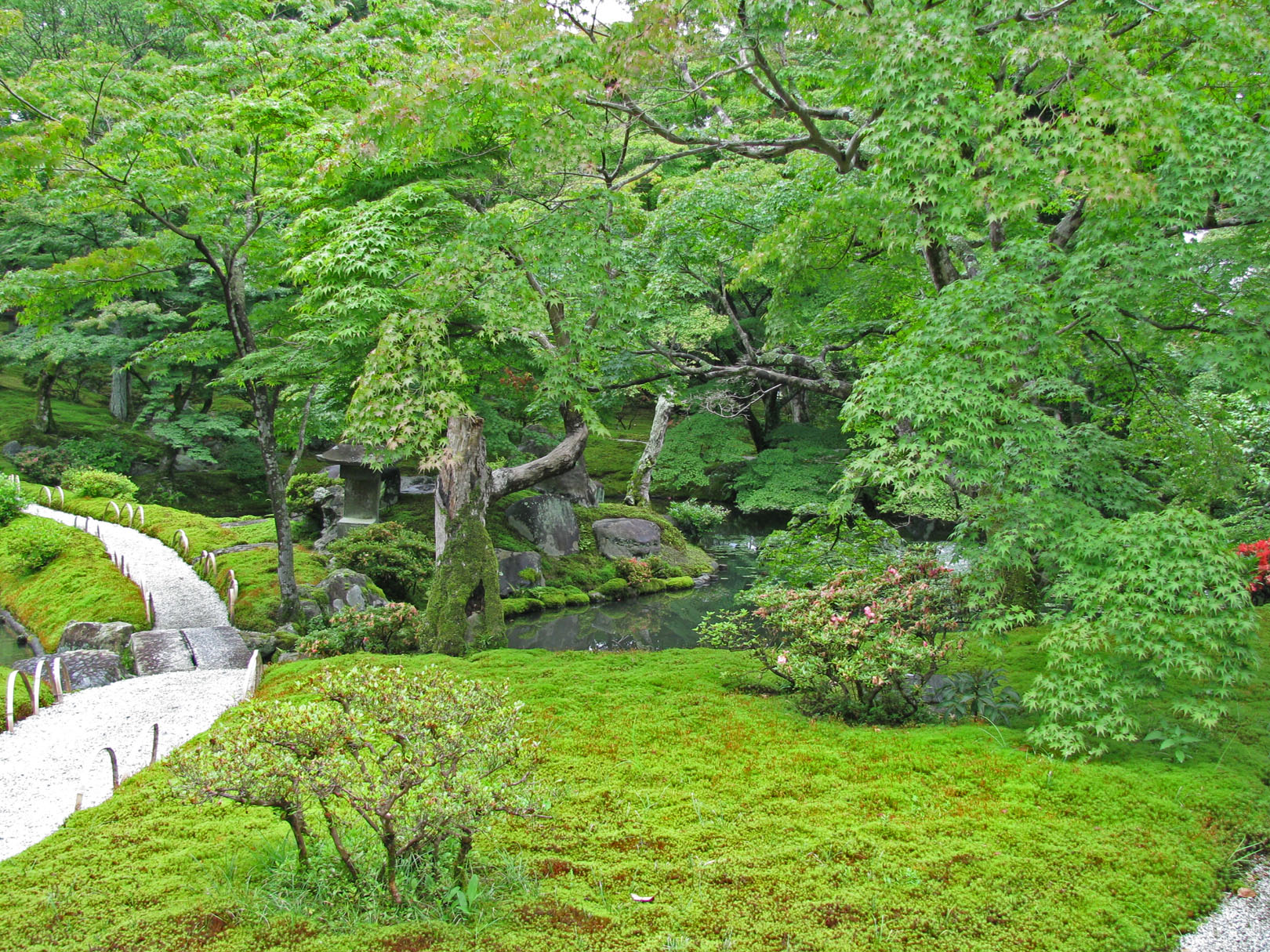
Moss forest landscape at Shugakuin Rikyu Imperial Villa, Kyoto, Japan.
Time slowed, thoughts expanded as we strolled up these stairs from the Silver Pavilion to the Philosopher’s Walk.
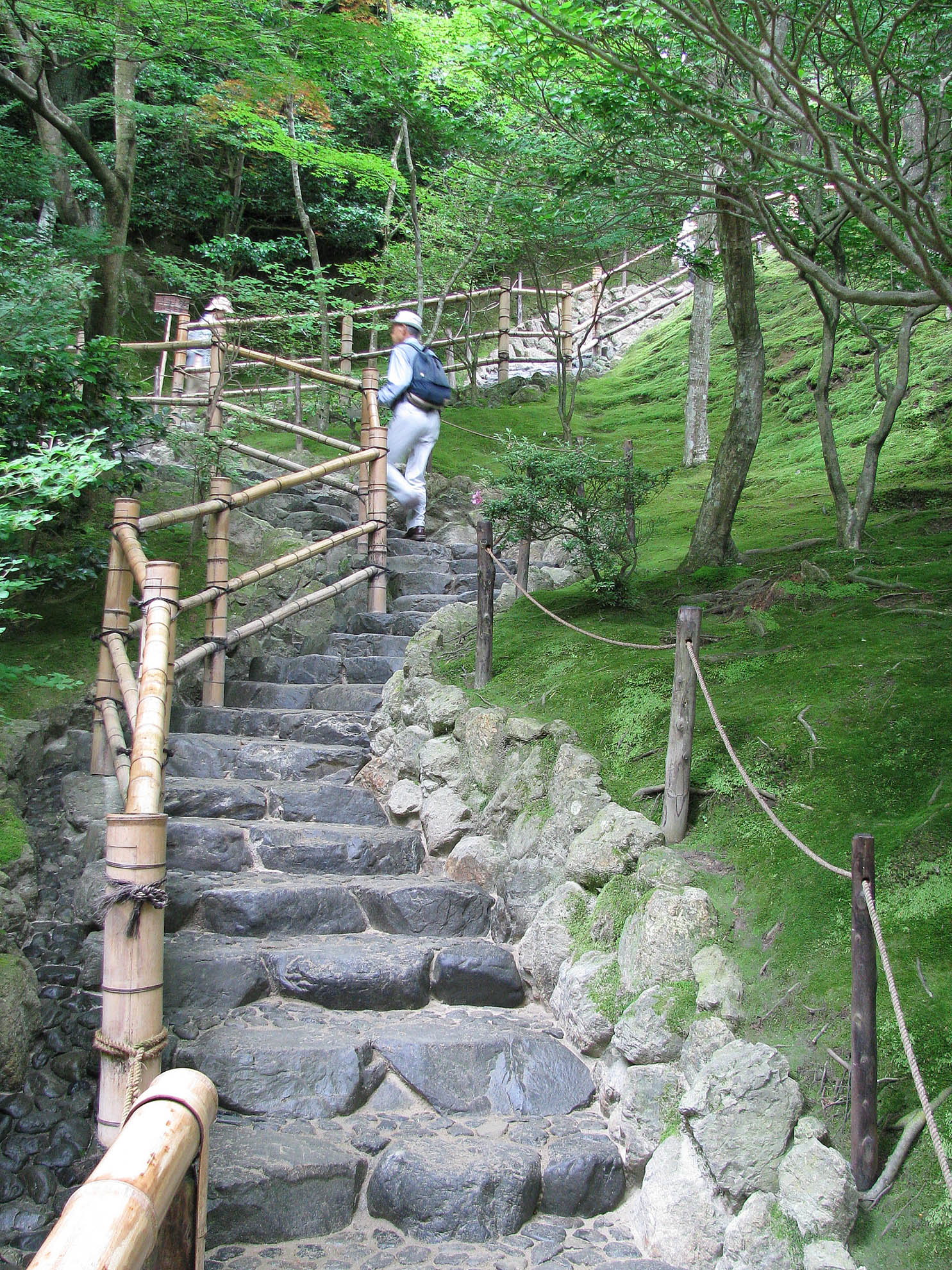
Moss gardens at Ginkaku-ji (The Silver Pavillion), Kyoto, Japan
The evocative Zen Gardens are minimalistic in nature. Ishidan is an interpretation of a sacred place. The center rock and moss mound represents Mt. Horai. The other two rock/moss elements represent Crane Island and Tortoise Island. The arrangement invites contemplation. Two viewing decks allow visitors to sit, rest, meditate or whatever one does when seeing a garden that asks you to think differently. Moss in this garden gave me a green place to sink into.
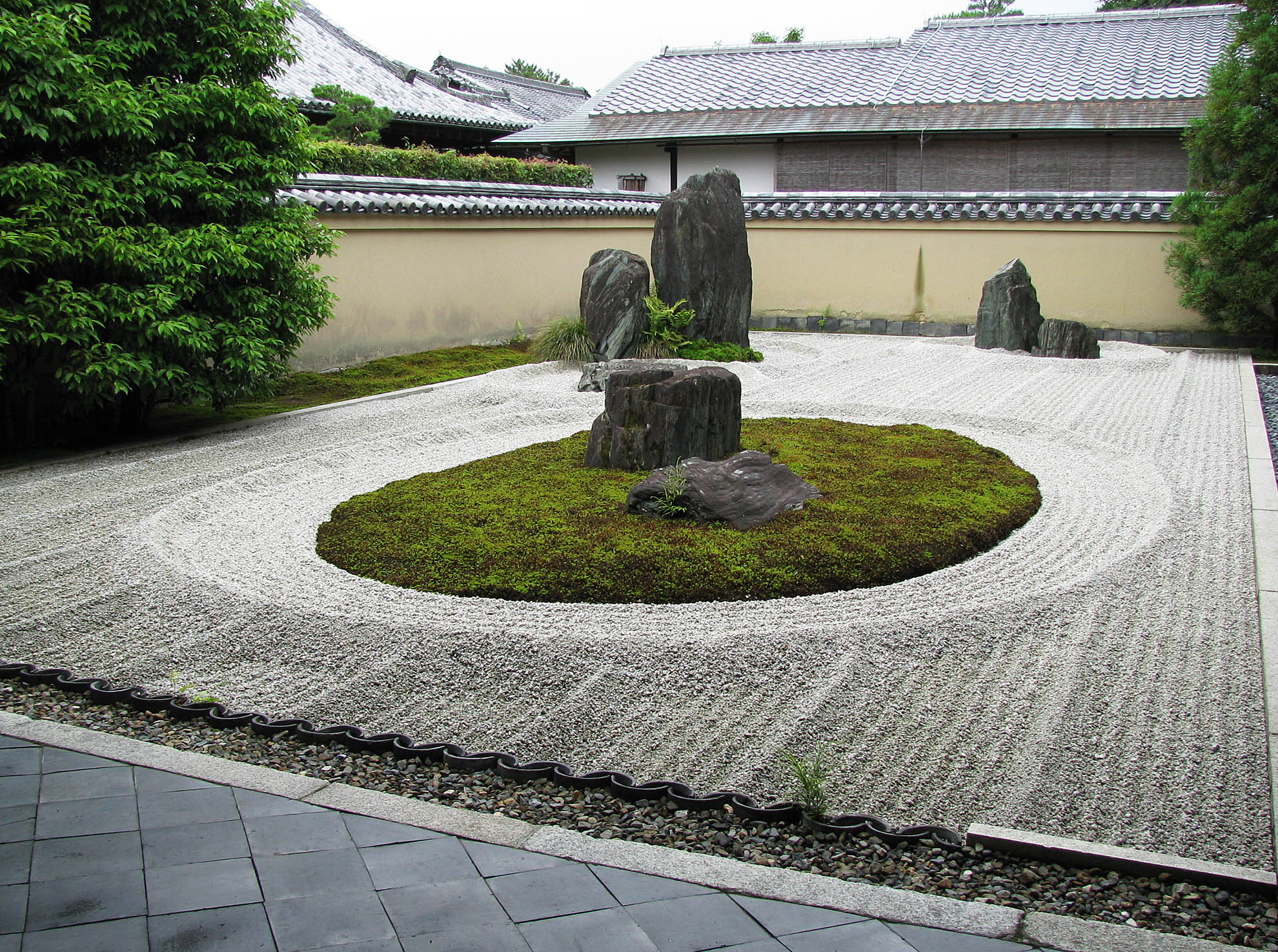
Zen Garden, Ishidan, at Daitoku-ji, Kyoto, Japan
I thought about trying to recreate similar gardens, on a much smaller scale, on the long plane ride home. But I realized that those gardens are not my context, not my culture. Instead I have nurtured areas in my garden where moss appears; low areas where water settles and dew collects.
Another Japanese garden style is the centuries-old tradition of bonsai which started in China and was copied by Japanese artisans. This tableau represents and is called “Roan Mountain.” Two Chinese junipers and an azalea (middle) tower over a moss-covered ground. These miniature landscapes are a more reasonable goal for most gardeners for using moss and for capturing a small part of the Japanese garden spirit.
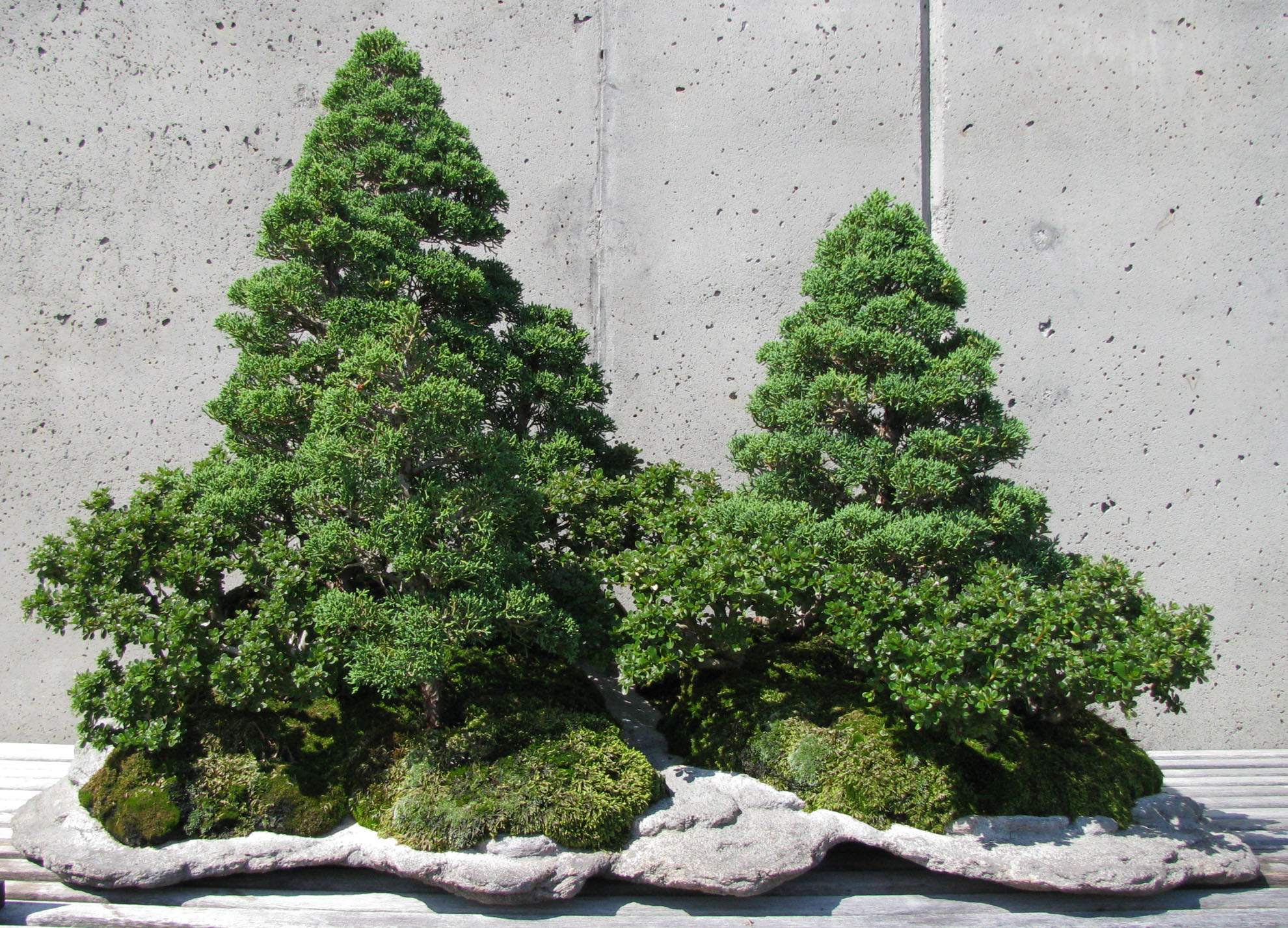
Bonsai at the North Carolina Arboretum in Asheville, NC.
One last expression of moss covered ground comes from Vancouver where moss forms the floor of the garden. It coats the rocks and any structure that will support its growth. Moss also changes the quality of sound in a garden; it absorbs sound and seems to signal that you are in a gentler environment. We soften our voices accordingly.
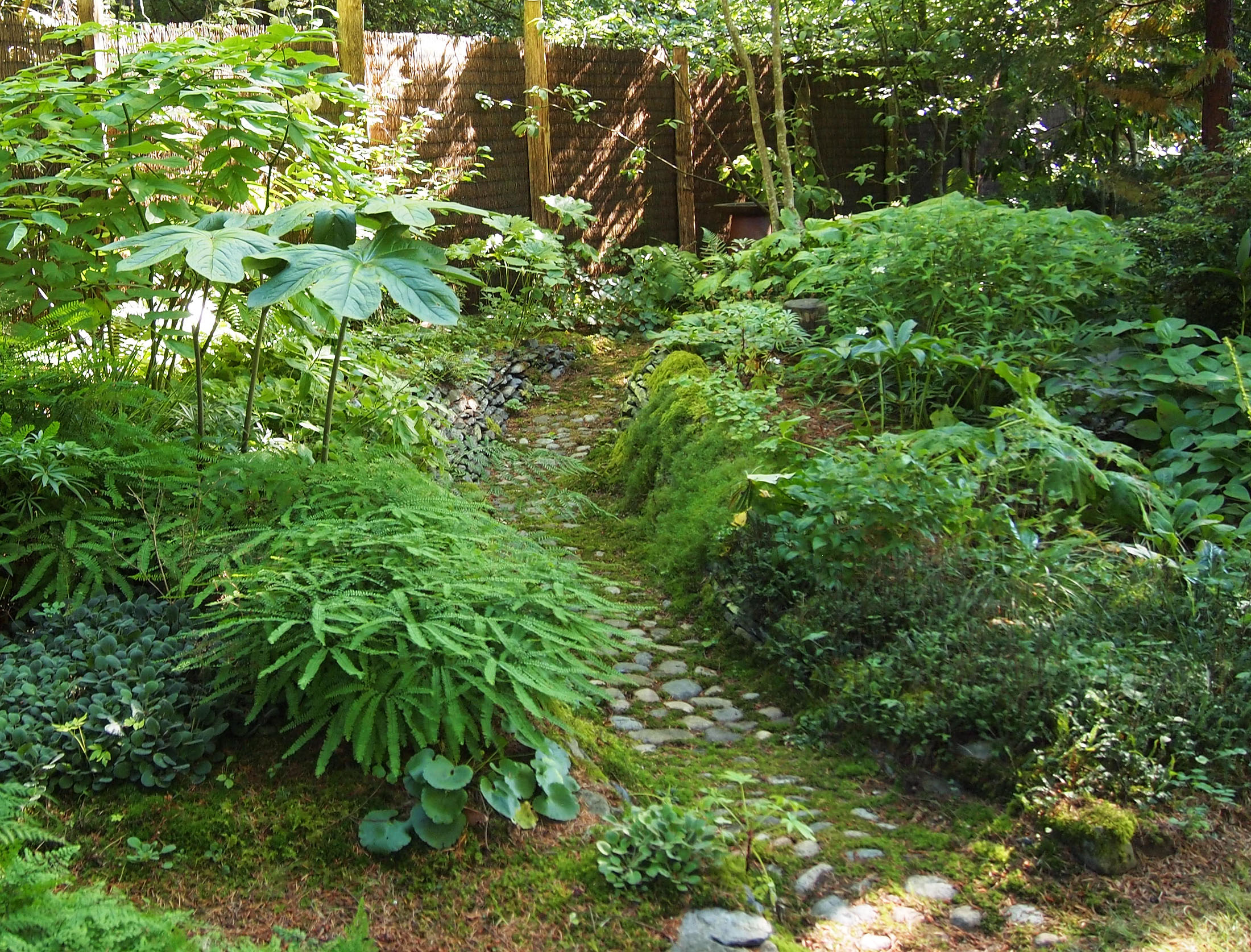
Moss path at a private garden in Vancouver.
In my early gardens, I loved when moss showed up, not understanding that this often indicated an area that did not drain well either because of compaction or being at a lower elevation where water collects. I protected those areas and watered them when they became dry. I was shocked to discover that some gardeners feel that moss is a problem and needs to be eradicated.
For those of you who do not want moss in your garden, here is one strategy for banishing moss from your garden if you are dealing with compacted soil in a moist, shady site. Dig up the area to loosen the soil; add compost. Plant a tree or shrub that is appropriate for the light quality and soil moisture conditions. Woody plant roots are thirsty and will compete with moss for the moisture in the soil. The addition of herbaceous plants will also help with a high moisture situation. If moss returns, consider it to be a groundcover and learn to like, if not love, it.
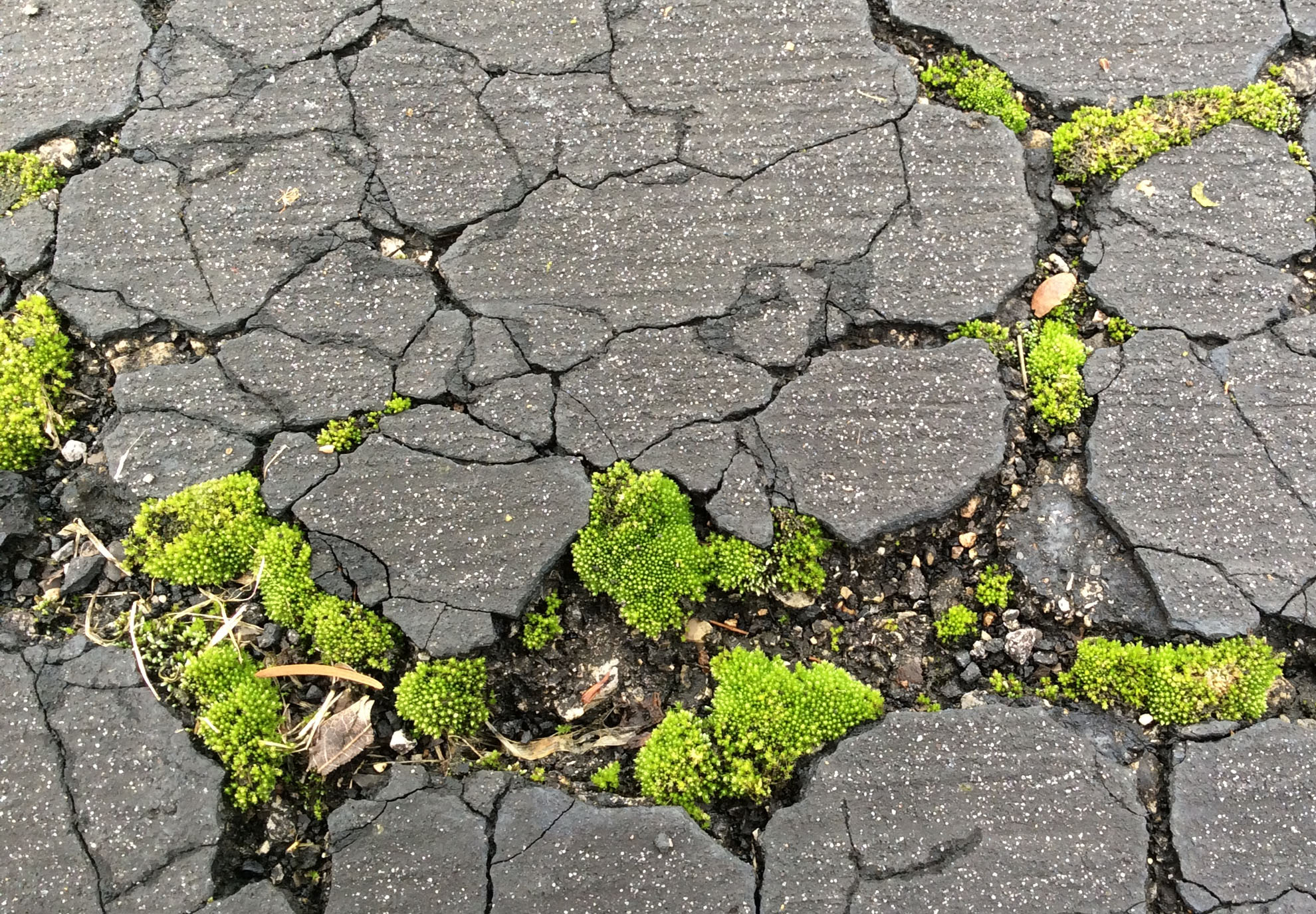
Moss taking advantage of our wet winter.
Michael showed moss lovingly tucked in between the bricks on his pathway. Here, moss is growing in the cracks of our asphalt driveway; a testament to the tenacity of this beautiful plant that seeks moist moments in the garden… and elsewhere.
Wishing you tenacity and joy!






















